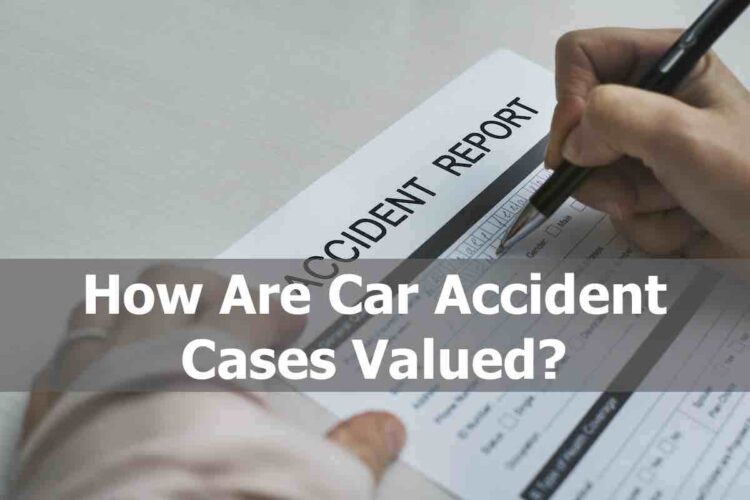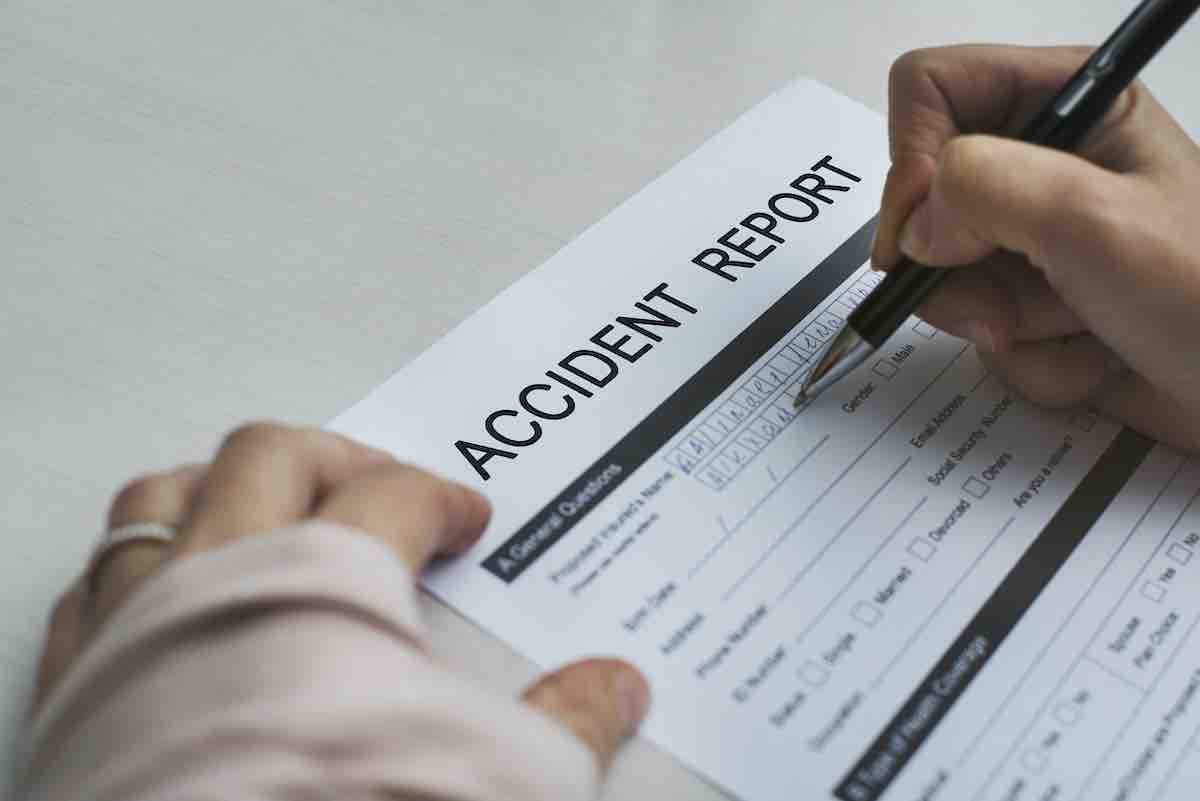How Are Car Accident Cases Valued?

Many car accident victims have a misconception as to why car accident cases settle for certain dollar amounts. A lot of the misconception revolves around stories of “what others have received” for “similar” car accident cases.
This article will shed some light as to how INSURANCE COMPANIES value your car accident case. Spoiler alert: it is not what you think.
There are dozens, if not hundreds, of factors that insurance companies take into consideration when coming up with an appropriate settlement offer. An “identical” car crash can lead to different results, depending on certain factors – including the actual insurance company.
Although many insurance companies (i.e. State Farm and Allstate) use some sort of “super-computer program” (i.e. Colossus) to evaluate your claim, many of the factors are universal across all the companies (just weighted differently).
Above all else, insurance companies compensate people that “they” feel are injured. That being said, insurance adjusters are trained to believe that every car accident “victim” lies or grossly exaggerates the extent of their injuries.
If an insurance adjuster friend tells you otherwise, they are lying. Their goal is to spot what they perceive to be “fraud”.
Although I don’t necessarily agree with some of the reasons insurance adjusters rely upon to value a claim, as an experienced personal injury attorney I understand their reasons, and as such, am able combat their biases by educating my clients on how to proceed.
I am also able to provide my clients with realistic evaluation of the claim’s value instead of a wild guess, liberally skewed to the policy limits.
Some of the most pertinent factors relied upon by insurance adjusters include:
Car Accident Case Valuation Considerations
Property Damage
Rule of thumb, the more significant the property damage the more likely an insurance adjuster will believe that your injuries are related to this crash and not a pre-existing injury.
In almost every case, an insurance adjuster claims that all (or most) of our client’s injuries were pre-existing. This is a standard response regardless of the medical records presented, especially if the client is over the age of 40.
It can be challenging to combat this argument as juries are inherently skeptical of clients receiving (significant) injuries in low-impact crashes.
Conversely, in significant property damage cases, juries (usually) give the victim the benefit of the doubt, sometimes dismissing evidence of pre-existing conditions.
Occasionally, insurance companies “overcompensate” victims of significant property damage because it is such an important consideration in the eyes of a juror.
Most cases that go to trial are low impact cases since insurance companies offer nickels (or pennies) on the dollar for these claims.
***On low-impact crashes with injuries, it is crucially important that the client receive treatment soon thereafter the crash (i.e. hospital or other doctor). After a “longer” delay, the insurance adjuster will insinuate that the client only received treatment after talking to a personal injury attorney.

Pre-existing injuries/ age of victim
Unfortunately, car accident victims with pre-existing injuries are “punished” by insurance adjusters as they believe that all (or most) of your current complaints pre-dated the crash.
Typically, as you get older, your spine begins to show signs of degeneration / “wear and tear”; this is the way of life.
Wear and tear injuries can be dramatically different than traumatic injuries, however.
Let’s assume you have a lingering lower back issue. It may flair up after 18 holes of golf or after moving furniture. For the most part, it is a mild nuisance.
You get into a car crash. Now the pain is constant. You can’t sleep. You can’t work. You modify your activities. An insurance adjuster will not offer you the full value of your claim because they apportion most (if not all) of your issues to your pre-crash condition.
In cases with significant property damage, we can (more easily) make the argument that this crash (significantly) exacerbated your condition.
In cases with low property damage, this argument is more challenging.
***On cases where the client showed signs of “pre-existing” injuries, it is crucially important to locate “before and after” witnesses who will verify how our client acted pre-crash and how she acted post-crash (i.e. client played golf 2x week pre-crash / client hasn’t played golf post-crash).
The more detailed explanations on how this crash effected your activities of daily living, the better.
Type of treatment
The type of treatment plays a huge role in the value of your claim.
Rule of thumb, the more invasive the treatment, the higher the settlement. It does make some sense that car accident victims who undergo more invasive procedures (i.e. injections, surgical intervention) should be compensated at a higher clip than someone who only undergoes physical therapy and chiropractic treatment.
A personal injury attorney has an easier time arguing that this crash has taken a tremendous toll on their client’s life when they can show a varied and advancing course of treatment over a period of many months or years.
A settlement offer with $20,000.00 in only chiropractic treatment will be (substantially) lower than a settlement offer with $20,000.00 in chiropractic treatment, two injections and a surgical recommendation all things being equal.
***(For many different reasons) a scrupulous personal injury attorney should never “push” treatment on a client. A client should know, however, that over-treating with a chiropractor or physical therapist may not provide as much “value” to your case as treating with a physiatrist, orthopedic surgeon or neurosurgeon.
Injections are usually good “bang for buck” as they provide relief and increase the value of your case.
Amount of treatment
This is oftentimes the most confusing factor for clients.
Let’s assume a client is involved in a massive car crash; the car is totaled. The client complains of moderate lower back pain but only treats 4-6x with a chiropractor. The client advises that he cannot go to the doctor because it interferes with work.
Client wants to settle the case and simply “live with the pain”.
This is a common fact pattern. Car crashes, and the subsequent treatment, can be extremely time-consuming and disruptive. I empathize with the client; the insurance adjuster won’t.
In the eyes of an insurance adjuster, insurance companies compensate people who treat as treatment is the only “sure-fire” way of knowing whether someone is really injured – someone who treats 4x-6x could not possibly be injured.
Big impact does not necessarily mean a client is injured (although they will argue that low impact automatically means the client is NOT injured).
In this scenario, the insurance company may offer a few thousand dollars to resolve your case.
On the other hand, insurance companies sometimes claim that clients are “over-treating” just to build their personal injury case – especially after more than 6 months of only chiropractic treatment.
Dammed if you, dammed if you don’t.
***Your personal injury attorney should treat your case like the children’s books “Goldilocks and the Three Bears”. You don’t want to under treat or over treat, but undergo the appropriate amount of treatment for your injuries considering the other factors (property damage, age, policy limits, etc.).
Racking up $50,000.00 on a case with $10,000.00 in bodily injury limits is not a good idea. Similarly (assuming you are injured), going to a chiropractor only 4-6x with $1,000,000.00 in property damage is equally as bad for your case.

Medical bills
This is oftentimes the most difficult factor for clients to swallow. In most cases, the insurance adjuster’s offer is commensurate with the total medical specials and outstanding medical specials.
The total medical specials are the total amount of your unadjusted bills. The outstanding medical specials is the amount you owe (“out of pocket”) after deducting set-offs such as PIP and health insurance.
The higher the total medical specials and outstanding medical specials, the higher the offer, all things being equal.
Is this fair? Of course not. In every case, however, insurance adjusters will claim that their offer was generated primarily from the medical bills. Also, in Florida, the laws are such that people are penalized for using their health insurance as a result of set-offs and subrogation.
Higher unadjusted amount lead to higher settlements.
Here are a few examples:
- Client’s total medical bills are $100,000.00. Client has health insurance which paid $10,000.00 for the medical treatment. Client’s balance is $0.00; Client has to pay back the $10,000.00 health insurance payments made as a subrogation lien, however. The insurance company may offer $50,000.00 to resolve this claim (as the outstanding medical specials are low). Client nets $23,333.33 after attorney’s fees and insurance lien.
- Client’s total medical bills are $50,000.00. Client is treating on a letter of protection and not through their health insurance. Client’s balance (on paper) is $50,000.00 – the full medical board. This amount will be negotiated and reduced upon settlement (depends on the provider and the treatment but let’s assume 50%). The insurance company may offer $100,000.00 to resolve this claim. Client nets $41,666.66 after attorney’s fees and medical bills.
- Client’s total medical bills are $100,000.00. Client is treating on a letter of protection and not their health insurance. Client’s balance (on paper) is $100,000.00 – the full board. This amount will be negotiated and reduced upon settlement (depends on the provider and the treatment but let’s assume 50%). The insurance company may offer $175,000.00 to resolve this claim. Client nets $66,666.66 after attorney’s fees and medical bills.
In this scenario, the client would have netted an additional $44,333.33 if she bypassed using her health insurance and treated on a letter of protection. Again, is this fair – absolutely not.
***It is crucial that your personal injury attorney explains to you the pros/cons of using your health insurance or treating on a letter of protection.

First date of treatment
Insurance adjusters penalize people who wait to receive treatment.
In their mind, any delay to receive treatment indicates a lack of any “real” injury; Stated another way, the longer the delay in treatment the more likely they “were pressured” by a personal injury attorney to see a doctor to build a (fraudulent) case.
You have personal injury protection (PIP coverage) available; use it.
Insurance Limits
Let’s assume you are involved in a horrific car crash where you suffer significant injuries. The at-fault driver purchased $10,000.00 in bodily injury coverage.
Under these facts, the at-fault’s insurance company (should) gladly immediately tender their $10,000.00 policy as the value of the case far exceeds the insurance limits. If the insurance company fails to tender their policy they may later be found to be conducting business in “bad faith” which could leave them on the hook for the full value of the claim.
The higher the coverage limits, the less likely the insurance company will later be found in bad faith for failing to timely tender their limits to resolve the claim.
***A good personal injury attorney will explain to you how the insurance limits may impact your treatment when we file a demand.
Filing suit
In some cases insurance companies will call your attorney’s bluff to see if he/she will file suit. On occasion, we have settled cases in suit for 5x-10x the pre-suit offer.
***You must hire an attorney who knows how to properly value a case. Do not assume that the insurance company makes the same offer to every single attorney and at every stage of the process.
If the insurance company knows an attorney is unwilling to file on your case, they have no incentive to offer more money to settle the claim.
Type of doctor
Doctors are tricky when it comes to personal injury cases. Besides the fact that some doctors are better than others (better credentials, bedside manner, better surgeon; etc.) some doctors are:
- Defense-friendly and think almost all injuries are pre-existing
- Terrible billing / records departments
- Will not testify live at trial / will testify poorly at trial
- Do not understand how to bill PIP
- Will not treat on an LOP
- Simply don’t like personal injury attorneys
A bad (personal injury) doctor can kill your case by writing the wrong language or not included the correct language.
***A good personal injury attorney will give their client recommendations on doctors (upon request). The client can (and should) treat with whomever they want, however.
Additionally, a good personal injury attorney will usually know which doctors are deemed “credible” or “not-credible” by that particular insurance company.
Bottom line
A good personal injury attorney will know how to increase your case’s value through the eyes of an insurance adjuster. It is NOT as simple as blindly treating with “XYZ doctor” and having your attorney write a strongly worded letter.
Ask your personal injury attorney about his/her credentials and how he/she adds value to your claim.
